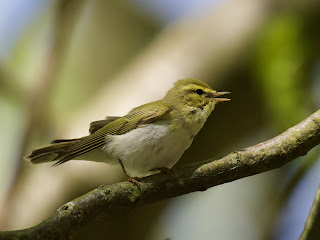Mid-May was the perfect time to head up to the north east corner of Aberdeenshire and visit Andy and Caroline in their new(ish) home in the sticks. A trip that was long overdue, well needed and very much enjoyed. I’d visited once before, in autumn 2021, but it’s safe to say the manor has moved on since then. Delighted for them to have found such a lovely place to live, surrounded by birds (and more than a few domestic animals). Caroline had made the place theirs and it shows. Great to see.
Birding-wise we got off to a flying start; just as my plane had landed at 5.15pm on Saturday 13th, news came through that the Northumberland Grey-headed Lapwing had been refound just over an hour away from the airport near Burghead. Andy is a reluctant twitcher but this was too good an opportunity to miss. It seemed remiss not to apply some gentle pressure and he soon cracked (it was for his own good). 1.5 hours after arriving in Aberdeen we pulled up at a roadside pig field flood near Lossiemouth and joined a handful of birders. The bird was immediately on show and, as is often the case, I seemed to enjoy the reacquaintance more than our original rendezvous. It was slightly more distant than last time, but in great evening light. Mr Carroll beamed like a Cheshire cat and I enjoyed watching him and others buzz. Some start to the visit, and it turned out to be a smart move as it departed overnight. Where next?



We visited Andy’s patch several times over the next days, including the excellent Loch of Strathbeg RSPB and Rattray Head, as we as several other spots along the coast.
I have to say it’s a fantastic area, not just because of the migrant and rarity potential, but also the sheer numbers of commoner birds that have slowly ebbed away further south. Swallows galore, Corn Buntings, Tree Sparrows and Yellowhammers are abundant, and Andy’s ‘garden’ (ok estate) thronged with Song and Mistle Thrushes, Siskins and Chaffinches. Crossbills and Sedge Warbler were not your average garden birds though.
Garden-wise the best birds of my stay were four adult Common Cranes, which appeared to be dropping in to his field as we got out of the car but were no doubt startled by our presence. Some spectacle to have these as a garden bird. There’s a small but growing population in the area, and we saw another pair at Strathbeg on two visits.
Migrant-wise I was a few days too late for Andy’s star junco find, but Rattray was worth a look daily. It’s basically a single garden adjacent to dunes and a lighthouse, with no other vegetation meaning it’s a migrant magnet. There’s a sizeable flood by the dunes that attracts waders, and the open arable fields are ideal for chats and the like. We only managed a Whinchat, a few Chiffchaff, Sedge Warbler, Whitethroats and a couple of Wood Sandpipers on the flood. The fields along the access track held a few Wheatears, five sparkling Golden Plovers and two late Pink-footed Geese. The potential here is fantastic and the historic rarity list isn’t too shoddy.
At Strathbeg RSPB, highlights were my first Temminck’s Stint in decades, more Wood Sandpipers, Ruff, 4 male Garganey and 2 Great Egret. There’s a thriving Common Tern colony in front of the hide and Marsh Harriers quartered the reeds, giving the place that throng of birds feel that RSPB does so well.
The only (small) downsides of the trip were a missed opportunity for a tick; bizarrely news of a Western Subalpine Warbler wasn’t released for 5 hours despite it being at the side of the coast road. More galling was that we’d driven past the observed minutes before he saw it. Good job it wasn’t anything rarer, I can wait for this one.
We also visited the stunning Ythan Estuary. As ever the place teams with life - Eiders and Terns are everywhere. We failed to locate the semi resident King Eider (Elvis) but I thoroughly enjoyed the birds. Masses of Sandwich, Arctic and Common Terns with a few Little Terns. An Osprey caused havoc at one point as it meandered past. There were plenty of commoner waders and the seal colony added to the sense of abundance.
Most importantly it was excellent to chill and enjoy good company. Have to say the catering was worthy of a trip alone. Look forward to my next trip to Laird Carroll’s.






















































